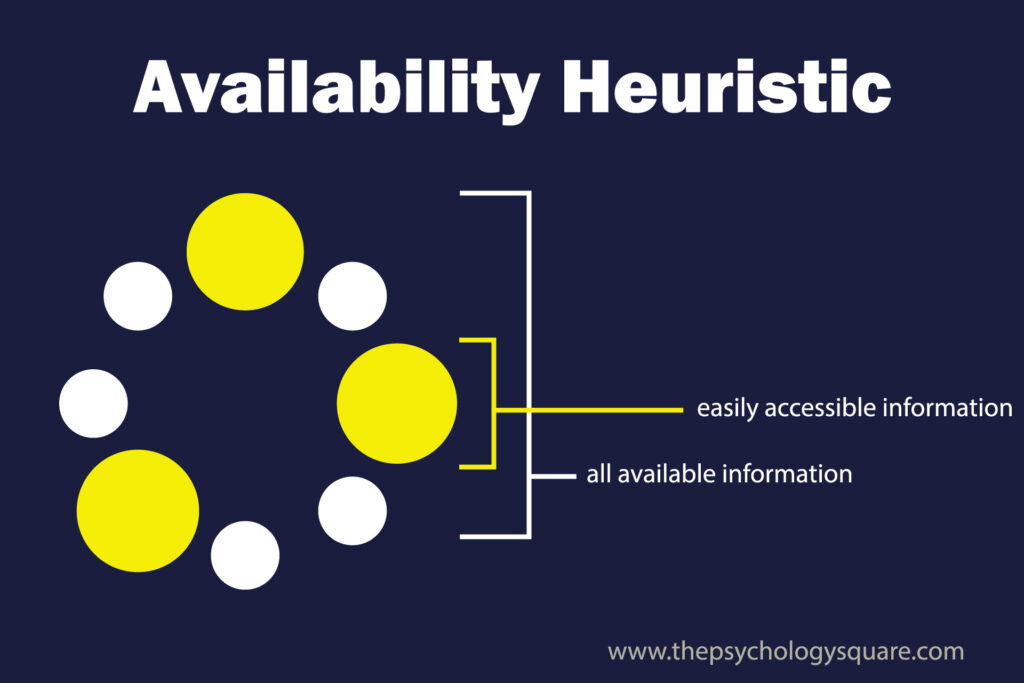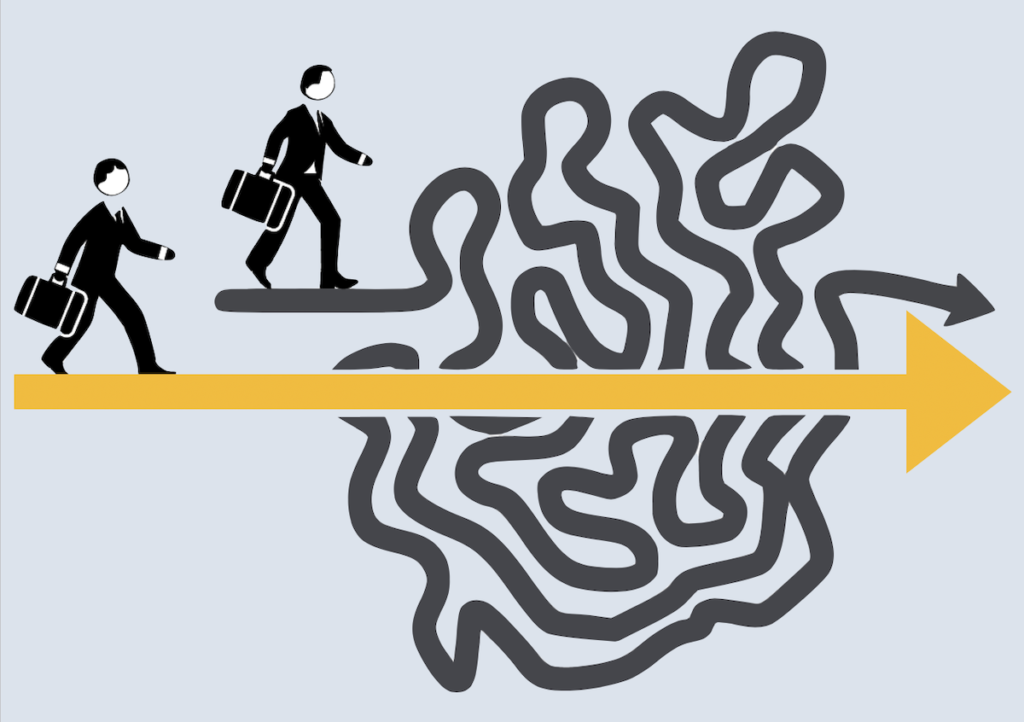Availability Heuristic: Unveiling the Tricks of Our Minds
Our minds often use heuristics, also referred to as cognitive shortcuts, to simplify decision-making when assessing the probability of events. The availability heuristic is a mental shortcut that explains how our decisions are influenced by how readily we can recall specific information. The Deception of Regularity Imagine this: How frequently have you caught yourself participating in dangerous actions such as texting while behind the wheel? If such instances readily spring to mind, there’s a tendency to inflate their frequency. This penchant for estimating frequency based on the ease of recalling instances is a classic hallmark of the availability heuristic. Misleading Notions of Safety Consider the common assumption that driving a hefty SUV provides superior protection compared to smaller vehicles. Yet, empirical evidence contradicts this assumption, exposing higher death rates associated with SUVs. Despite this, many still cling to the illusion of SUV safety, influenced by the vividness of dramatic incidents, such as SUVs colliding with smaller cars, which readily come to mind. Our minds favor such easily retrievable images, often at the expense of accurate statistical data—a phenomenon dubbed the ease-of-retrieval effect. The Impact of Dramatic Incidents Why, then, do these misconceptions persist? Blame it on the influence of sensational incidents etched in our memories. We fear air travel more than driving, despite its statistical safety, due to vivid portrayals of plane crashes. Similarly, dramatic causes of death, like homicide, overshadow mundane yet prevalent killers like cardiovascular diseases. These skewed perceptions arise from the media’s penchant for spotlighting sensational events, making them more accessible in our mental landscapes. The Physician’s Conundrum: Navigating Bias in Diagnosis Even experienced professionals such as doctors are influenced by the availability heuristic’s appeal. Studies indicate that doctors exposed frequently to information about a specific illness may succumb to misdiagnosing cases that bear superficial resemblance to it. This bias underscores how readily accessible information shapes decision-making processes, even in the realm of healthcare. Desires and Financial Risk-Taking Moreover, our wishes have a strong impact on decision-making, particularly during periods of economic instability. Despite being warned about financial caution in times of economic decline, individuals are often drawn to riskier investments due to the appeal of potential high returns. The availability heuristic exacerbates the inclination to take risks by increasing the allure of potential rewards. Physician Bias and Diagnostic Oversights Doctors, who have the important job of diagnosing illnesses, can also be influenced by the biases caused by the availability heuristic. Study reveals a concerning pattern: being exposed to a lot of information about a certain illness can lead to incorrect diagnoses in similar cases with comparable symptoms. This phenomenon highlights how cognitive biases can have a powerful effect on professional decision-making, which can be very serious for patient results. Imagine a scenario where doctors encounter numerous instances of a rare condition. Subsequently, when faced with patients exhibiting symptoms resembling this illness, their minds gravitate towards the familiar diagnosis, even if it may not be the most accurate assessment. This tendency highlights the complex relationship between mental shortcuts and medical knowledge, emphasizing the need for careful attention and accurate diagnosis in the medical field. Economic Decision-Making amid Uncertainty In fields other than healthcare, the availability heuristic greatly influences economic decision-making, particularly in times of instability. During periods of economic decline, people struggle with increased financial instability, leading to a move towards more risky investment actions driven by the hope of possible profits. Understanding Economic Threat and Risk Propensity Recent research delves into the intricate dance between perceived economic instability and the inclination towards risk-taking. By subtly influencing individuals with the specter of financial uncertainty, studies have revealed a corresponding uptick in their readiness to dabble in speculative ventures, such as gambling. This vulnerability to heuristic biases underscores the significant influence of psychological factors on economic decision-making, questioning the traditional belief in rational choice theory. The Availability Heuristic in Consumer Behavior and Brand Perception Moreover, the availability heuristic has an effect on consumer behavior by shaping how brands and products are perceived in various significant and subtle ways. When assessing famous brands, individuals tend to depend on the accessibility of information regarding their characteristics, leading to biased viewpoints rooted in subjective ease of retrieval rather than objective evaluations. Consider this: when prompted to recall instances of a brand’s superiority, individuals may prioritize easily accessible examples, overlooking potentially superior alternatives. This model highlights the complex relationship between mental shortcuts and consumer decisions, emphasizing the importance for marketers to skillfully understand cognitive biases when influencing brand loyalty and perception. Strategies for Informed Decision-Making in the Face of Heuristic Biases As we conclude our analysis of the availability heuristic and its significant effect on human thinking, it is important to offer people practical methods to avoid heuristic biases and promote informed decision-making in various domains. Below are a few tactics to avoid the downsides of availability heuristics. Cognitive Awareness and Education Developing cognitive awareness is essential in minimizing the impact of heuristic biases. Educating individuals on cognitive shortcuts like the availability heuristic helps them identify and challenge biased judgments. Comprehending the psychological basis of decision-making enables individuals to adopt a more analytical and selective method in processing information. Intentional Information Seeking During a time of excessive information and preference for certain viewpoints, it is crucial to explore multiple perspectives and collect thorough information to reduce the effects of mental biases. Individuals can avoid relying too heavily on easily available information by diversifying the sources of information they consume and considering various viewpoints. This method promotes a decision-making process that is more detailed and comprehensive, based on evidence rather than subjective ease of use.Top of Form Upholding Evidence-Based Practice in Professional Arenas In fields like healthcare and finance, supporting evidence-based practice is crucial for reducing the impact of intuitive biases on decision-making. Professionals use empirical data, rigorous analysis, and meticulous scrutiny of evidence to prevent falling into the trap of cognitive shortcuts. Instituting frameworks grounded in empirical principles for diagnostic precision, risk evaluation, and investment scrutiny fosters a climate of responsibility
Availability Heuristic: Unveiling the Tricks of Our Minds Read More »


